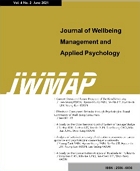 E-ISSN : 2586-6036
E-ISSN : 2586-6036
Vol.4 No.4
Abstract
Purpose: This study aims to measure the level of satisfaction with the overall education of current students, who are major consumers of education by department at the Health Care Convergence University, and to establish development strategies such as improving education quality and satisfaction by deriving problems and improvements. Research design, data and methodology: This study drew conclusions through secondary data analysis based on data surveyed by the Educational Performance Management Center of a university in the academic year of 2020. The target of the education consumer satisfaction survey was 470 students of the College in the academic year 2020. Frequency analysis and correlation analysis were applied to the data using the statistical package program SPSS 25 version. Results: In the major curriculum satisfaction survey, the department with the highest score was optics and optics, 4.11, and the department with the lowest score was medical IT, 3.29. Conclusions: The department with the highest correlation in the correlation analysis result of the demand survey by department was the Department of Medical Management and the Department of Medical IT, with a correlation coefficient r=0.984, and the lowest correlation in the correlation analysis result of the demand survey by department was the Department of Medical IT and Dental Hygiene, with a correlation coefficient r= -0.085.
Abstract
Purpose: The purpose of this study is to form a new cosmetic market through the development of a composition with high skin permeability after adding omega 3 to Aloe Vera soothing gel products. Research design, data and methodology: In this study, omega-3 fatty acids were added to cosmetic products in the form of soothing gels. By applying nanoparticle technology to rapidly increase the penetration of raw materials into the skin, characteristics related to skin moisture and regeneration were determined. Omega-3 was used as a raw cosmetic material. Then 5% and 15% nanoparticle aqueous products containing omega-3 were prepared. The developed water hydrate was subjected to skin permeability test using artificial skin. Results: 53 hours of artificial transdermal penetration of the developed composition, the ethanol-based omega-3 containing nanoparticle solubilized raw material was about three times higher penetration than the ethanol-based omega-3 containing nanoparticle solubilized raw material. Conclusions: The raw material product (SR-1901) containing 5% of omega-3 nanoparticle water hydrate has skin regeneration ability and pain reduction effect. It can be expected that the skin cosmetics market will be reorganized into a new distribution structure and opportunity through omega-3 supplemented soothing gel cosmetics with improved efficacy than existing cosmetics.
Abstract
Purpose: The study tried to make a comparison between local and global brand hotels with respect to the relationships among customer experiences, service quality, customer satisfaction and consumer-brand relationship. This study provided strategic implications according to its results. Research design, data and methodology: To this end, this study collected data from 300 participants who have stayed at local and global brand hotels in Seoul. SAS 9.4 was used for data analysis. Results: The results showed that experiential modules ('sense' module and 'feel-think-act') affected service quality (human service, physical service) in local brand hotels. But 'feel-think-act', one of experiential modules, only affected service quality in global brand hotels. Also, physical service only had strong effects on customer satisfaction with both local and global brand hotels. Finally, customer satisfaction was influenced by consumer-brand relationships for two hotel groups. But there were no statistically significant differences in all estimations between local and global brand hotels. Conclusions: In conclusion, the study provided some strategic implications that experiential marketing in hotel industry needs be practiced maintain the competitive advantage and sustain branding power and will result in stronger consumer-brand relationships in local and global brand hotels.
Abstract
Purpose: The purpose of this study is to review health-care program using the recent robotic horse-riding technology and its clinical effects for chronic low back pain. Research design, data and methodology: Recent clinical articles were determined under three inclusion criteria for in-depth review: 1) article that is published within 1 year, 2) article that includes the detailed explanation of health-care program using robotic horse-riding, 3) the article that deals with chronic low back pain during more than 6 months. Results: As a result, the finally-determined two articles demonstrated the clinical effects of robotic horse-riding statistically on pain intensity, low back muscle strength, spinal alignment, and fear-avoidance belief. Conclusions: After in-depth review, I concluded that health-care program using robotic horse-riding for chronic low back pain needs to be provided at low-intensity (e.g. less than 6km/h horse walking program) in the beginning of health-care for improving their motor control ability, then, at the increased intensity for strengthening core muscles.
Abstract
Purpose: The purpose of this study is to identify the causes of odors generated in traditional markets and to suggest appropriate application technologies to solve them. Research design, data and methodology: In order to achieve the purpose of this study, complex malodors, TVOC, and hydrogen sulfide were measured three times at each point in Wonju-city, Gangwon-do using direct-reading odor measuring equipment in Joong-ang Traditional Market's Korean beef Alley, Sundae Alley, and Joong-ang Citizens Traditional Market. Therefore, the average value was compared with the emission standard and analyzed. Results: As a result of the study, complex malodors exceeded the emission standards at all points, and hydrogen sulfide exceeded the emission standards at all except for one point. Conclusions: The odor generated in the traditional market has various causes and low concentration, so it is necessary to reduce the odor by using an appropriate technology.













